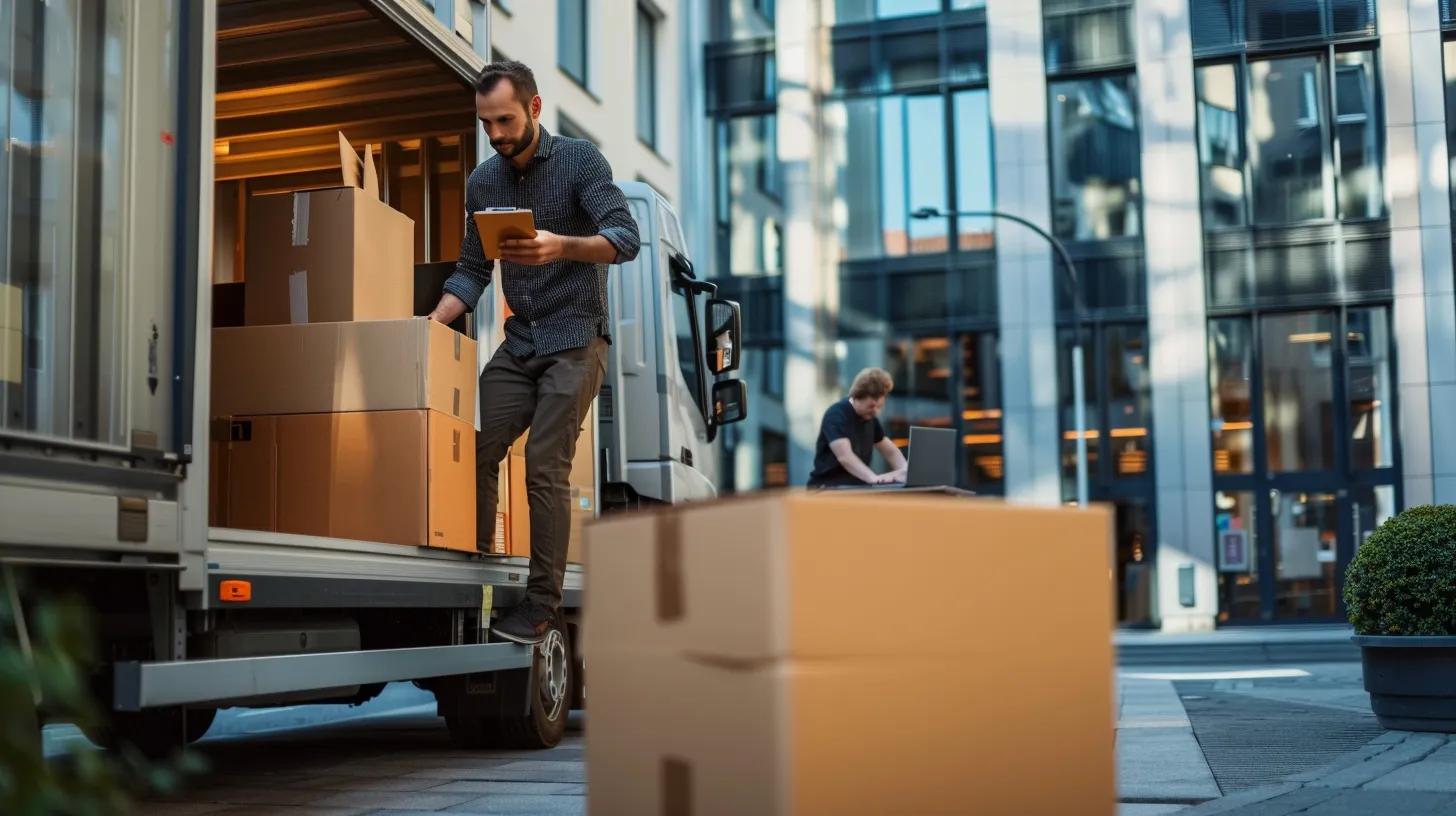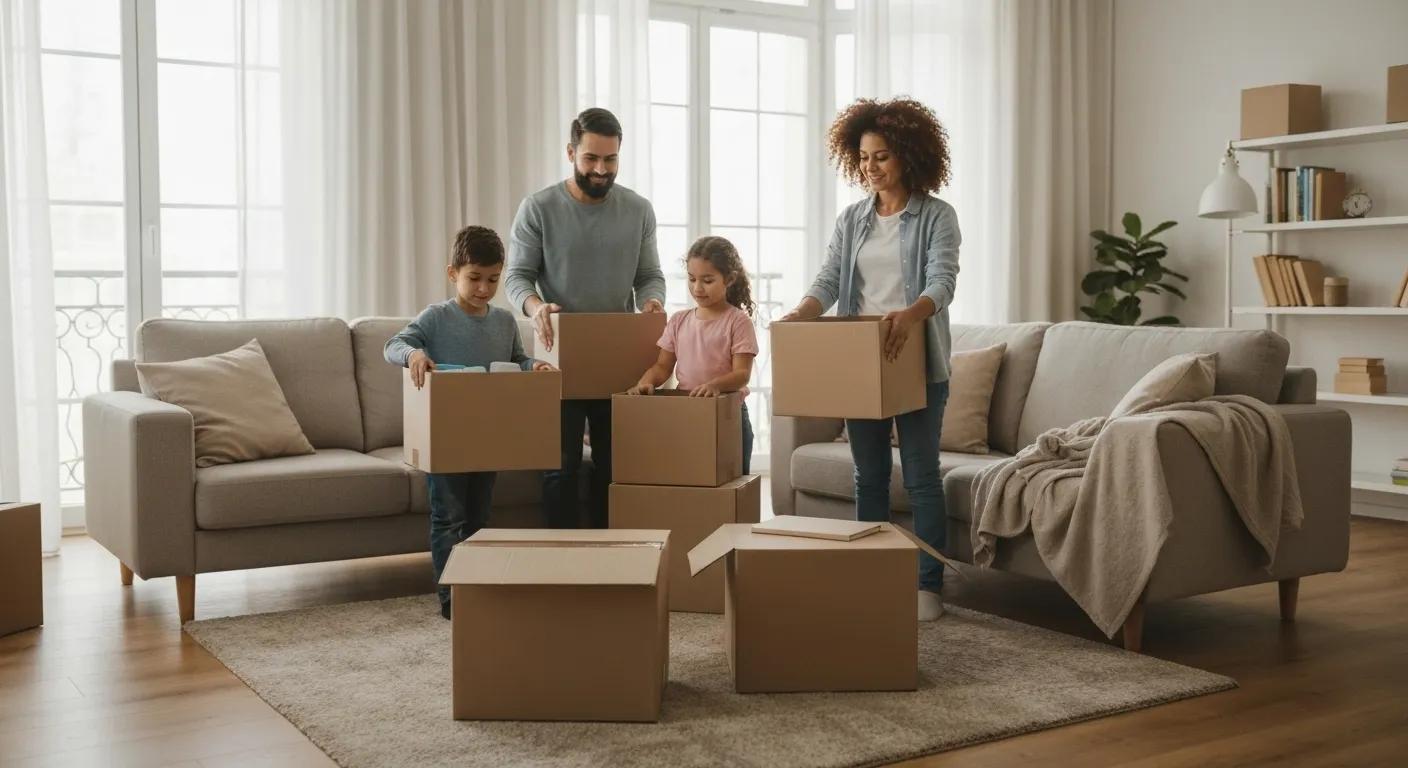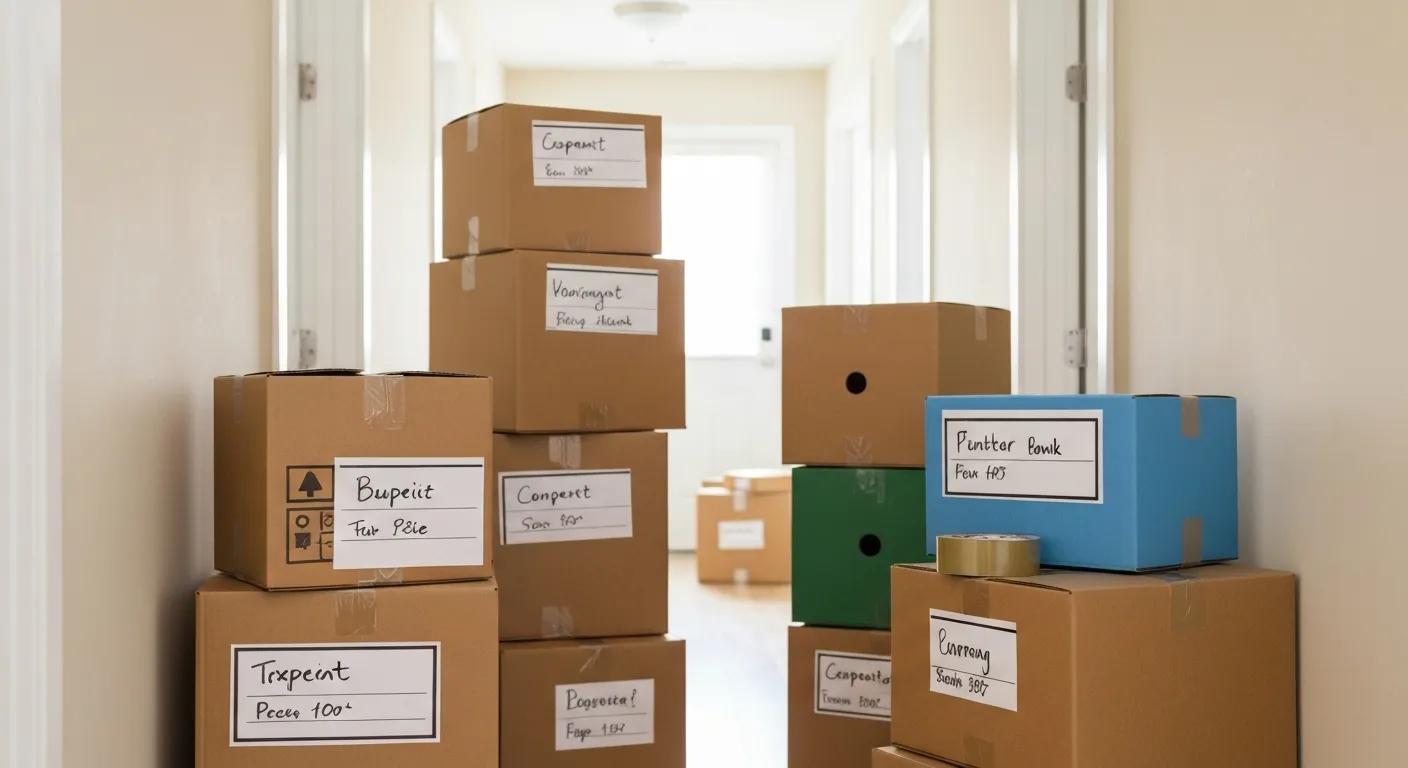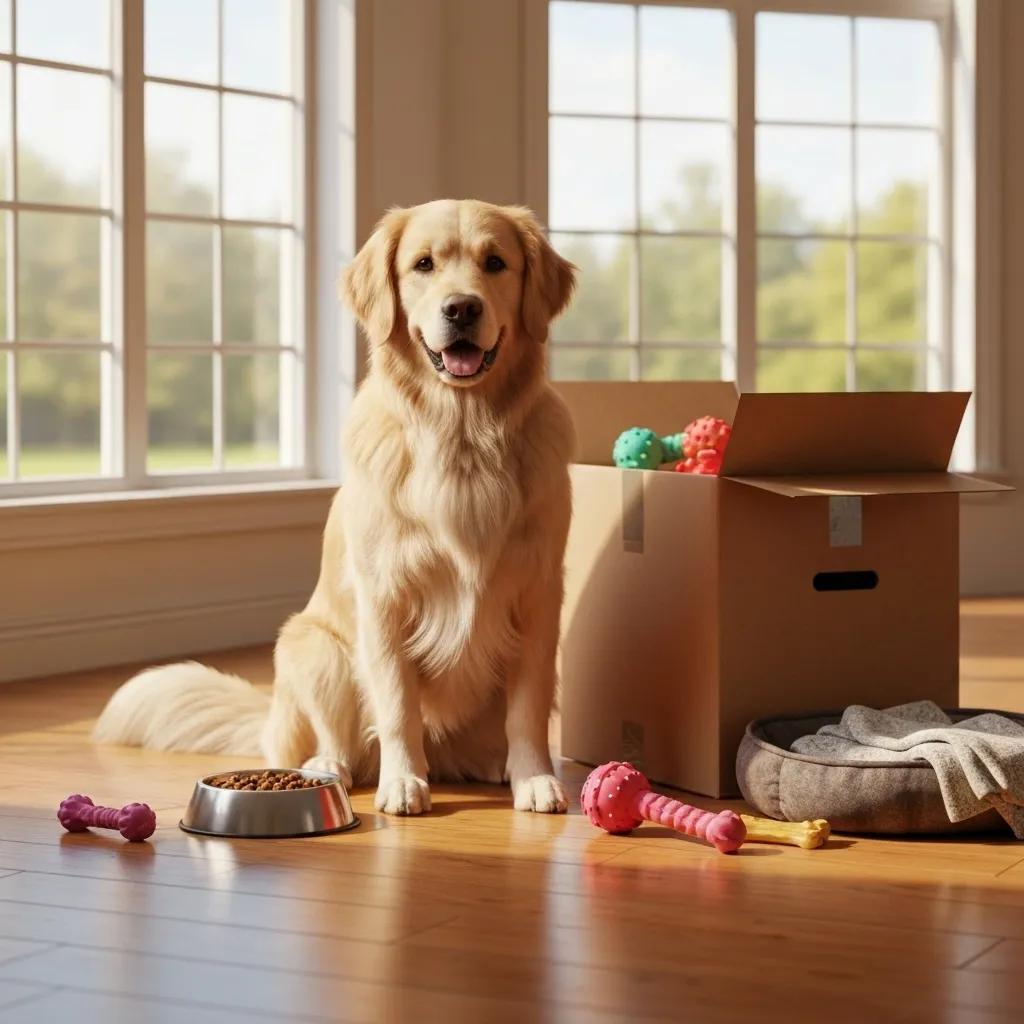Moving to Florida? We share essential tips for hiring reliable Florida moving services, ensuring a smooth and stress-free long-distance move. Let’s get started!
Read More


Embarking on a cross-country move often brings a wave of concerns about packing, logistics, and ensuring absolutely nothing is overlooked. Within this comprehensive guide, you’ll uncover tried-and-true packing strategies for long-distance relocations that transform potential chaos into seamless order, provide robust protection for your delicate possessions, and keep your move precisely on schedule. We’ll walk you through every crucial stage—from initial pre-move preparations and detailed room-by-room approaches to handling specialty items and even packing with your pets in mind—before delving into when it’s best to enlist professional help, how to master moving day, and essential organization hacks. Armed with expert insights and practical, actionable steps, you’ll feel completely confident in achieving a truly stress-free transition. Discover how Alma Moving expertly blends professional long-distance moving expertise with a genuinely caring approach to support your entire relocation journey.
Getting ready for a long-distance move means establishing a clear, actionable roadmap—this includes decluttering, creating a detailed inventory, and meticulously managing your checklist. These steps are designed to significantly reduce the volume of items you need to move, prevent those frantic last-minute scrambles, and guarantee that every single item is accounted for. This foundational preparation paves the way for smoother packing and sets the stage for a calm and collected relocation experience.
Decluttering before you start packing is all about thoughtfully sorting your possessions into categories: keep, donate, or discard. This process not only shrinks your overall packing workload but also helps you focus on what truly matters and what you genuinely need in your new home.
This strategic purge not only streamlines your packing efforts but also thoroughly prepares you for an efficient and organized inventory process.
A moving inventory serves as a detailed record, capturing essential information such as item names, their current condition, and the specific box number they’re packed in. This meticulous tracking is vital for keeping tabs on all your belongings and significantly expedites the claims process should any damage occur during transit.
An accurate and detailed inventory reduces uncertainty and provides a clear guide for where items should be placed upon arrival at your new destination.
A comprehensive long-distance moving checklist is designed to organize all your tasks by a specific timeline—spanning months, weeks, and days leading up to your move. This structured approach ensures you stay on track and don’t overlook any critical steps in the relocation process.
Following this organized sequence ensures you approach the packing process systematically and enter moving week feeling fully prepared and in control.

Implementing effective packing strategies for a long-distance relocation involves a combination of organized room-by-room packing, employing specialized protection for all fragile items, and creating a dedicated essentials kit to ensure your comfort on moving day. These carefully considered tactics not only safeguard your belongings but also significantly support a smooth and efficient unpacking process once you arrive.
Packing your belongings room-by-room is a highly effective method that minimizes confusion by grouping related items together. This approach also greatly simplifies the unpacking process, allowing you to place items directly into their corresponding spaces in your new home.
Organizing your packing by space maintains clarity throughout the process, significantly cuts down on search time later, and prevents the frustrating mix-up of contents.
Packing fragile items safely requires a meticulous approach that involves layering protective materials, carefully filling any empty spaces, and often double-boxing particularly delicate pieces to effectively absorb shocks during transit.
Choosing the right combination of cushioning materials is paramount to minimizing breakage and ensuring your most valuable possessions remain protected under the stresses of long-distance travel.
An essentials box is a critical component of any move, as it holds all the vital items you’ll need immediately upon arrival at your new home. This includes things like snacks, toiletries, medications, and phone chargers, ensuring you remain comfortable and functional as you begin the unpacking process.
Having these readily accessible items significantly reduces downtime and ensures your first night in your new home is as hassle-free and comfortable as possible.
Specialty items, such as electronics, artwork, and furniture, require highly tailored packing methods that specifically protect their unique structures, delicate surfaces, and intricate mechanisms from potential damage when traveling across state lines. Proper disassembly and custom packaging are absolutely key to ensuring a smooth and damage-free relocation for these items.
Packing electronics effectively is crucial for preventing data loss, physical damage, and static buildup. This is achieved by using appropriate anti-static materials and sturdy, well-fitting enclosures for each device.
Properly boxed electronics will arrive ready to be reconnected and powered up without any unexpected hiccups. For a completely seamless plan, consider exploring comprehensive long distance moving solutions that include expert packing for all your valuable electronics.
Artwork and other valuables demand the use of rigid crates, acid-free paper, and protective corner guards to effectively guard against bending, moisture damage, and impact during transit.
This meticulous attention to detail ensures that your most precious and sentimental items arrive at your new home in absolutely pristine condition.
Disassembling furniture and packing its components separately, along with all hardware, significantly streamlines the reassembly process at your new home while also preventing the loss of small parts and potential damage to the furniture itself.
Completing these essential steps preserves the integrity of your furniture and saves valuable time during the setup phase in your new residence. Ready to simplify your next move and ensure your furniture is handled with care? Get a free quote for professional packing and disassembly services from Alma Moving.

Moving with pets introduces an additional layer of planning, but by carefully packing essential items like food, comfort items, and medical records, you can ensure your four-legged family members remain calm, healthy, and safe throughout the entire journey. Integrating pet-centered steps into your moving plan will significantly reduce anxiety for both you and your beloved companions.
Packing a dedicated kit of pet essentials is crucial. This should include their regular food, food and water bowls, any necessary medications, their favorite bedding, and a beloved toy to help maintain their routine and provide comfort on the road.
With these essential items packed and kept close, your dog’s familiar comforts will travel right alongside you, making the transition smoother.
Achieving stress-free pet relocation relies on several key strategies: gradually introducing them to their travel crate, planning regular mid-journey exercise breaks, and maintaining consistent feeding schedules to minimize disorientation and anxiety.
Implementing these thoughtful adjustments helps pets adapt more smoothly and with less stress to the overall moving process.
For specialized guidance on pet transport, including necessary licenses and recommended service providers, you can:
This directory provides access to reliable experts who can manage everything from door-to-door transport to navigating complex regulatory paperwork, ensuring your dog’s journey is as secure and comfortable as your own.
The decision of whether to hire professional packers often depends on several key factors, including your available time, the value of your items, and your personal stress tolerance. Professional packing services can save you significant time, reduce the risk of personal injury, and often come with valuable packing material warranties for your most precious goods.
Professional packers eliminate the guesswork and potential stress associated with packing by utilizing industry-grade materials, employing efficient techniques, and providing liability coverage to ensure your belongings are protected from the moment they’re packed until they reach your new home.
These considerable advantages translate directly into greater peace of mind and the assurance of a reliable and secure delivery of your possessions.
Selecting the right moving company involves a thorough evaluation of their licensing, customer reviews, and the range of services they offer to ensure they align perfectly with your unique relocation needs.
Partnering with a reputable and experienced provider ensures accountability and guarantees a smooth execution of your relocation. Serving all U.S. states, with a strong focus on long distance moves along the Eastern Seaboard. For reliable expertise in long-haul relocations from Southern Florida through Miami and beyond, visit ourLong Distance Moving Services in Miami page.
Achieving a successful moving day hinges on efficient loading procedures, clear and consistent communication with your moving crew, and a well-prioritized unpacking plan that transforms boxes into a functional living space without unnecessary delays. These practical tactics help maintain momentum and significantly reduce feelings of overwhelm.
Efficient loading involves grouping boxes by their designated room, strategically stacking heavier items at the bottom for stability, and ensuring clear pathways are maintained to expedite truck access and unloading.
This methodical approach significantly cuts down on overall move-in time and minimizes the physical strain of heavy lifting.
Effective unpacking begins with the absolute essentials—bedding, basic kitchen supplies, and toiletries—and then progresses systematically room by room to restore functionality to your living space as quickly as possible.
Implementing a staged unpacking plan keeps you on track, helps you settle in efficiently, and prevents the overwhelming feeling of being buried under stacks of cartons.
High-impact organization hacks, ranging from intuitive color-coding systems for labels to utilizing advanced digital inventory apps, ensure transparency, drastically reduce search time, and keep you firmly in control of every single phase of your relocation.
Using a standardized labeling system—which effectively combines color codes, clear room identifiers, and concise content descriptors—makes box tracking effortless and significantly streamlines the entire unpacking process.
Consistent and clear labeling practices ensure you can easily find important items without the frustration of rifling through every single box.
Selecting durable, purpose-built packing materials is essential for preventing damage and supporting the rigors of long transit times. This involves combining robust strength with effective cushioning for maximum protection.
Choosing these specialized materials based on the specific type of item you are packing significantly reduces breakage risks and simplifies the unpacking process upon arrival.
Leveraging digital tools—from sophisticated inventory apps to detailed relocation timeline planners—provides real-time tracking capabilities, timely deadline alerts, and secure cloud-based document storage, ensuring every critical detail is readily accessible at your fingertips.
Integrating technology into your moving process significantly cuts down on manual errors and brings much-needed clarity to what can often be a complex and overwhelming undertaking.
Ready to experience a truly stress-free relocation? Request your personalized plan and free moving quote today, and let our expert team guide you confidently from the initial packing stages all the way through to the final unpacking.
Where are you moving to?
Here at Alma Moving, we've simplified the quote request process to offer you a hassle-free experience. We aim to deliver a quick and accurate quote that respects both your time and your specific moving needs.
Copyright © 2024. All right reserved.